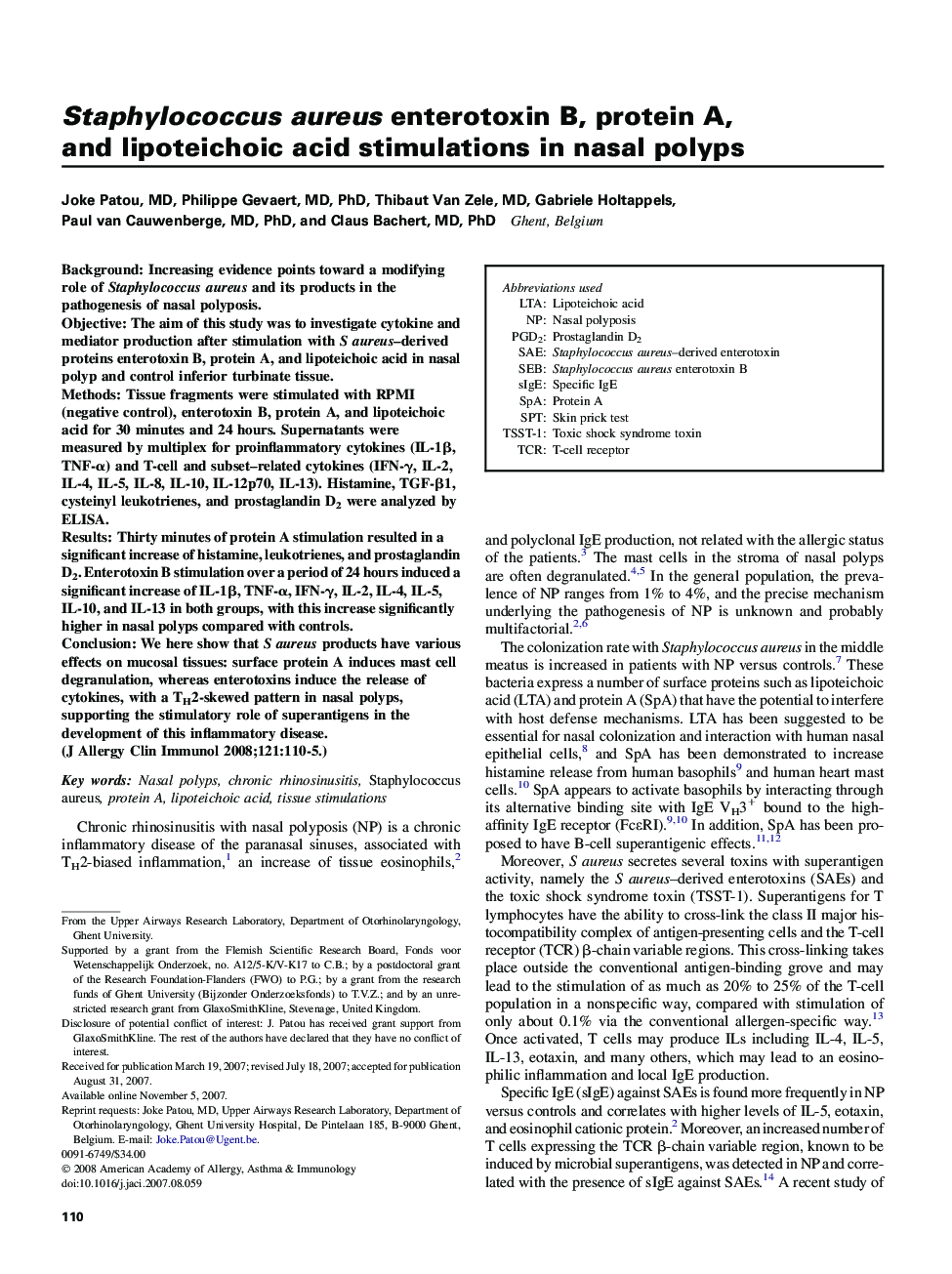| Article ID | Journal | Published Year | Pages | File Type |
|---|---|---|---|---|
| 3200996 | Journal of Allergy and Clinical Immunology | 2008 | 6 Pages |
BackgroundIncreasing evidence points toward a modifying role of Staphylococcus aureus and its products in the pathogenesis of nasal polyposis.ObjectiveThe aim of this study was to investigate cytokine and mediator production after stimulation with S aureus–derived proteins enterotoxin B, protein A, and lipoteichoic acid in nasal polyp and control inferior turbinate tissue.MethodsTissue fragments were stimulated with RPMI (negative control), enterotoxin B, protein A, and lipoteichoic acid for 30 minutes and 24 hours. Supernatants were measured by multiplex for proinflammatory cytokines (IL-1β, TNF-α) and T-cell and subset–related cytokines (IFN-γ, IL-2, IL-4, IL-5, IL-8, IL-10, IL-12p70, IL-13). Histamine, TGF-β1, cysteinyl leukotrienes, and prostaglandin D2 were analyzed by ELISA.ResultsThirty minutes of protein A stimulation resulted in a significant increase of histamine, leukotrienes, and prostaglandin D2. Enterotoxin B stimulation over a period of 24 hours induced a significant increase of IL-1β, TNF-α, IFN-γ, IL-2, IL-4, IL-5, IL-10, and IL-13 in both groups, with this increase significantly higher in nasal polyps compared with controls.ConclusionWe here show that S aureus products have various effects on mucosal tissues: surface protein A induces mast cell degranulation, whereas enterotoxins induce the release of cytokines, with a TH2-skewed pattern in nasal polyps, supporting the stimulatory role of superantigens in the development of this inflammatory disease.
